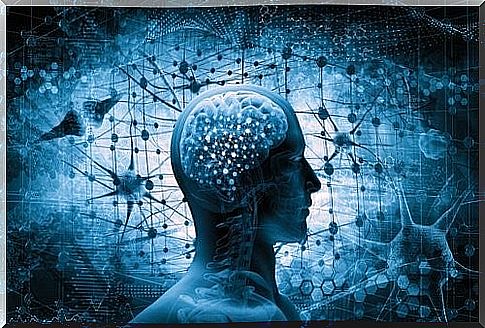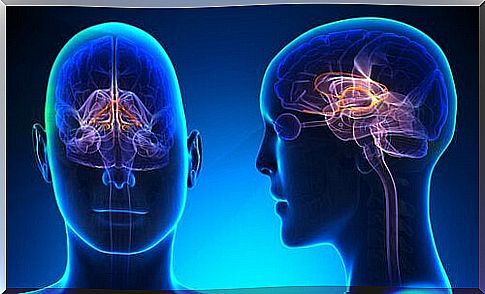Critical Situations: How Does The Brain React?

In critical situations, the brain responds differently than usual, activating an ultra-fast-responding neuronal system. Thus, it sets in motion a series of behavioral and hormonal responses that have survival as their ultimate goal. This mode of functioning is innate and different from the one we use consciously.
Our brain has the task of checking that everything we do is successful. It is, among all, the organ most responsible for physiological and behavioral dynamics. In many circumstances it works in a conscious and procedural way (i.e. it activates functions already learned, such as walking or talking).
However, this mode is not the only one available to us. In critical situations , where a risk or threat to life is detected, the brain relies on other neural networks responsible for the survival system. The brain is trained to make immediate decisions in the face of looming danger.
We have a neural network organization designed to act as an alert system. It is this system that takes the lead in critical situations. Obviously it is not perfect and can sometimes lead us to make the wrong decision or to miscalculate the answer.
Let’s see how the brain works in critical situations and to what consequences the activation of the alarm and survival system can lead.
Limbic system of the brain: the alarm button
The brain is equipped with a neural system that has the task of processing emotions and responses related to fear and anxiety. This is the limbic system, located in the temporal lobe. In it there is a structure dedicated specifically to identifying and interpreting the danger: the amygdala. The amygdala is in connection with different areas of the brain and can initiate fast and effective reactions.
In practice, all mammals are endowed with an instinctive flight-fight-paralysis reaction in the face of dangerous stimuli. This reaction is triggered by the amygdala. The “alarm button” can be activated in a conscious way when we perceive a serious danger or in an unconscious way by means of a cerebral “shortcut”. In other words, it is possible that, before we know it, the survival system has been activated and that the amygdala has already initiated a series of responses.

The possible responses of the brain to critical situations
The first thing the brain can do is give the command to escape. This is a little questionable order: our brain does not ask us to evaluate whether it is appropriate to flee or to stay. The answer , therefore, could make the situation worse because it is an instinctive decision that does not take into account the possible consequences.
Leak
The function of escape is the simple instinct to move away, in search of refuge or help. In a critical situation, escape is not always to our advantage and may not evaluate possible dangers. We could decide, for example, to cross the street without looking or to jump off a balcony without taking the height into account.
Struggle
Another possible answer is the fight ( fight in English), that is the attempt, sometimes extreme, to eliminate the dangerous stimulus. When the sympathetic system is activated in the fight response, adrenaline levels in the blood increase, generating an acute stress reaction. The muscles become more resistant, the skin less sensitive, the lungs more capacious. All of this translates into increased strength and endurance.
Paralysis
The third possibility is paralysis, or freezing , or the loss of the ability to react, the attempt to hide, impotence. Paralysis – as a response – hopes that the threat passes without noticing our presence. At the same time, it is important to remember that when this response is activated, we lose control over the musculoskeletal system (responsible for muscle movement) and therefore remain immobile.
In this way the brain in emergency situations enjoys a survival system that is activated ultra quickly and unconsciously. A matter of a few milliseconds that, sometimes, leads us to give an unfortunate answer. On many occasions, in fact, it is the response itself that increases the danger. This is why there is a large category of professions trained to act in emergency situations.
Activation of the alarm and survival system: what consequences?
The sure and immediate consequence, once the critical situation has passed, is physical and emotional exhaustion. This state of extreme fatigue is the result of the wear and tear it goes through and can last more than a day. In some cases it can persist despite sleep or rest. This happens because all the neuronal and physical resources have been destined to survive and overcome the critical situation. The last phase is, therefore, the recovery of the lost energy.

In addition to fatigue, another consequence is the trace that the situation leaves in our memory. This happens because the amygdala and the hippocampus (structure in charge of fixing new information and creating memories) work together. The amygdala activates the hippocampus so intensely that it leaves the memory strongly impressed. For this reason, we generally remember critical situations throughout life, and with a good wealth of detail.
An extreme consequence of brain activation in critical situations is post traumatic stress disorder (PTSD). This condition develops in the face of a very high level of physical activation and when fear is the dominant emotion.
This syndrome, which requires targeted psychotherapy, is characterized by flashbacks, moments of great sadness and the constant perception of a threat in the surrounding environment.
Finally, it is important to remember that the brain can learn to respond more adaptively to dangerous or critical situations. Training, protocols to use in emergencies and self-defense strategies are key elements that can improve our response.









